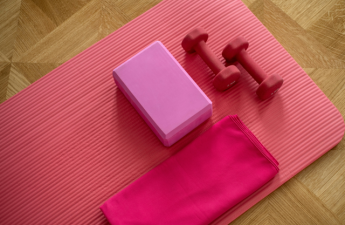
Be honest. How much food do you end up tossing out every week? If you’re anything like me, you find yourself throwing away produce you had every intention of eating (but has since turned into a terrifying science experiment in the back of the fridge) more often than you’d like. Turns out I’m not alone. In the U.S., 30-40% of the foods supply is wasted. This is equivalent to more than 20 pounds of food per person per month! So what do you do when good food goes bad and how can you keep it from going bad in the first place?
For help, I turned to Jen Ede, the new editor of TOPS News magazine. In her previous life, Jen worked as a personal chef and employed some pretty creative methods for preventing food waste. Check out our Q & A session.
Q: Do you have any tips for smart and savvy grocery shopping so that you don’t end up wasting food?
A: I try very hard to buy only what I need and to plan my meals with the goal of using those ingredients up. I don’t always go shopping with a set menu, but I do keep in mind my staples—what I regularly eat—and my obligations for the week ahead. Am I cooking at home? Going out? Is there a special occasion where there’s food (and, if so, do I want to be eating it or should I bring something for myself)?
Knowing my schedule helps me make sure I have healthy food on hand when I need it. It’s tempting to pick things up because they’re on sale or they look good, but oftentimes, when we don’t have a plan, food gets wasted either because we don’t cook it in time or we forget it’s even there! Then, we either buy something quick or go out, which is doubly expensive.
Q: How can we prevent perfectly good produce from going bad?
A: A few tips here: the big one is to know how to store it. Root vegetables will keep for a long time in a cool area. Fragile veggies, like greens and herbs, need more attention. Greens should be kept in the crisper and rinsed and dried just before you eat them. Herbs will last a few days longer if you cut the ends and stand them up in a glass of water on your counter. Stems can be added to a variety of different dishes, from pestos to soups. Many nutrients can be found in peels, too. When I lived in Boston, I was part of a CSA (Community Supported Agriculture). Every week, a new box of freshly picked produce was delivered to my office. This wasn’t scary at all—I had a plan! It was like Iron Chef in my kitchen every week.
Here’s where my second tip comes in—it’s a great one to keep in mind during summer produce season. When I buy (or receive) produce, I sort it into the kind I eat raw and the kind I have to cook. I make sure the raw stuff is close at hand for when I need a quick snack—I literally have no choice but to keep eating healthy, crunchy things because there is so much sometimes! It’s a great way to make sure I get enough fruits and veggies, and it cuts down on waste in the short and long term.
Another helpful hint is to know a couple of recipes to dress the raw product up. If I have a big bag of greens, for instance, I’ll make one of my favorite dressings (sometimes, salads need a dash of excitement). If it was cabbage, well, I drew deeply from my days living in Eastern Europe and either ate it raw in a salad, made sauerkraut, or threw it into soup. In general, roasting with some olive oil, salt and herbs has helped me redeem many a wayward vegetable.
Q: Tell me more about the idea of “Fridge Zero.”
A: I didn’t know that the term didn’t exist yet, so I guess I coined it! I am always striving toward “Fridge Zero”—that is, I try to use up all the food I buy before I add new items to my fridge (condiments are the exception, but even those need to go sometimes). The idea is to know what you already have there, and also in your cabinets and freezer. That way, when you go shopping, you can be thinking, that beef roast has been in there for a while… wouldn’t some carrots and turnips go nicely with it? Or how about that whole-wheat pasta you bought with the best of intentions… wouldn’t it taste great with some greens, garlic and basil, along with that can of tomatoes you already have?
It’s been a process, but I’m always trying to keep healthy foods in my house so that when I reach for something to eat, I don’t have to worry about whether or not it’s good for me. But, I have also had to transition from one way of eating to another and hate throwing food away. Working toward “Fridge Zero” helped me feel like I was making those incremental changes without being wasteful.
Q: Are there any special rules you live by to help you avoid wasting food?
A: This is a concept I know I didn’t create—“Kitchen Sink.” Sometimes, a dish I throw together contains everything but the kitchen sink. Greens that are getting wilty, a potato that’s been with me a bit too long, herbs that look a little sad—all bound together with eggs (a frittata, if you’re feeling fancy). It helps to have a basic understanding of what tastes good together, but don’t let that stop you from experimenting. You’ll figure it out, and even if it’s weird to other people, so what?
I wouldn’t be a very good editor if I didn’t mention something related in our next issue of TOPS News. Keep an eye out for smoothie recipes—they’re a great way to get nutrition in a jiffy. You might be surprised by what combinations appeal to you (and how they might help eat up what’s already in your fridge)! Members, turn to page 10 in the August/September issue.



I use wilted lettuce in vegetable soup and stock.